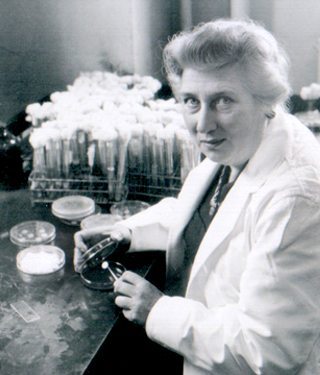It Happened Here: Bacitracin
The story behind its groundbreaking discovery.

Today, a tube of bacitracin ointment is simply something you reach for in the medicine cabinet, right next to the aspirin and bandages, to treat minor skin problems such as paper cuts, scraped knees and small burns. But before bacitracin’s creation, injuries like these could lead to serious infections.

The discovery of bacitracin in 1943 was accidental: Balbina Johnson (left), a bacteriologist at the Columbia University College of Physicians and Surgeons, discovered that a type of microbe in a young girl’s leg injury showed antibacterial activity. In other words, it killed bad germs. The name bacitracin was conceived in honor of Margaret Tracy, the girl whose injury led to the discovery of the new antibiotic. By the early 1950s, bacitracin had been proved effective in treating conditions ranging from acute staphylococcic endocarditis (staph infection) to amebiasis (intestinal infection). The Journal of the American Medical Association reported in 1951 that bacitracin had even been used to treat human bites incurred during brawls. Brawl or not, most of us apply the ointment today for minor skin wounds, where it kills existing bacteria and inhibits the growth of new ones.
